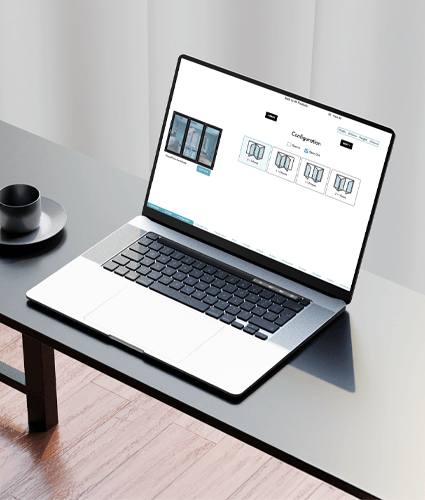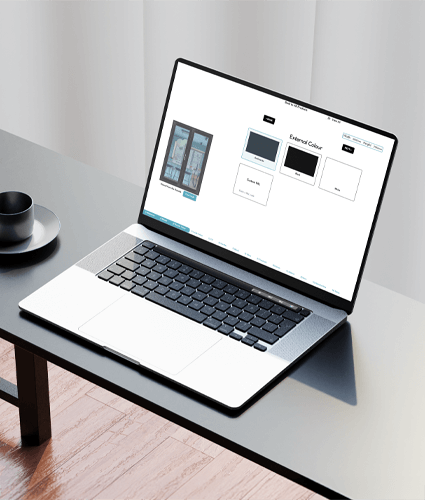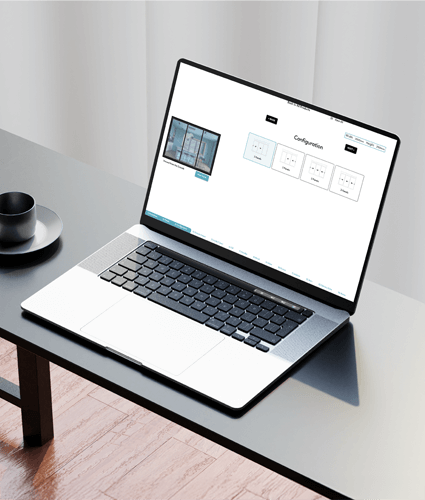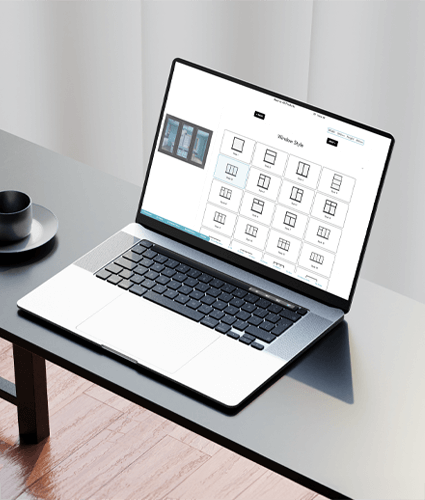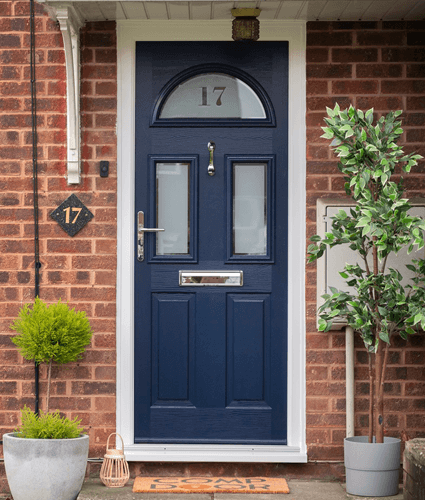
Design Your Door Here
Bifold vs. Sliding Doors: Opening Style
Bifold Doors v Sliding Doors. What’s the better option? The main difference between bifolding and sliding doors is how they open and the arrangement of their glass panes.
- Close in on themselves like an accordion when opened.
- Transform your living space into a Mediterranean-style al-fresco terrace, extending your interior space into the garden.
- Panels fold and stack to the side, either inside or outside your home, keeping them neatly out of the way.
- Open in a smooth gliding motion.
- Panels line up one after the other on their runners until stacked behind the final frame.
- Leave your room completely open to the sights, sounds, and aromas of your garden.
Both types of doors are simple and easy to open. Sliding doors generally offer a bit more ease due to their sliding motion and not needing to unlock from their frames.
Choosing Between Bifold and Sliding Patio Doors: Which Offers the Best View?
When choosing between bifold and sliding patio doors, the view of your garden or outside space is a key factor to consider.
Sliding Doors:
- Provide a wider and more panoramic view.
- Minimal frame design and large glass panes enhance the view.
Bifold Doors:
- Offer a full and clear transition from inside to outside.
- No fixed pane when open, allowing for an entirely open and frame-free view.
Both types of doors have their advantages, depending on your preferences for viewing your garden or outdoor space.
Space Considerations: Sliding vs. Bifold Doors
When deciding between sliding and bifold doors, space is a crucial factor.
Sliding Doors:
- Ideal for limited space, as they don’t occupy room when opened.
- Available in configurations of 2, 3, 4, or even 6 glass panels, suitable for smaller areas.
- Excellent for large openings due to their slim frames and expansive glass panes.
- Generally better for wider gaps compared to bifold options.
Bifold Doors:
- Can make a small space look impressive but require room for the opening mechanism.
- Best suited for medium or larger homes with ample space.
- Advantage: absence of a threshold, allowing for a flush fitting seamlessly with your floor.
Maximising Light: Bifold vs. Sliding Doors
Both sliding and bifolding doors allow ample natural light into your home. Generally, the difference in light capabilities between the two is minimal.
Sliding Doors:
- How much light reaches inside depends on the glass pane size.
- Sliding patio doors often have a slight advantage due to larger panes.
Bifold Doors:
- Can provide more space for light by fully opening your home to your garden.
- Offer unbroken sunlight when completely opened.
Thermal Efficiency: Sliding Doors vs. Bifold Doors
Both sliding and bifolding doors are incredibly thermally efficient due to the aluminium break technology in their frames, which maximises heat retention.
Sliding Doors:
- Often have the edge in thermal efficiency due to less frame space, which is typically the weak point for heat retention.
- This difference is generally negligible in most cases.
Bifold Doors:
- While also thermally efficient, they tend to have more frame space, slightly impacting heat retention.
Ventilation:
- Sliding doors offer an advantage as they can be opened as far as you want, allowing for better ventilation.
- Bifold doors must be fully opened or closed unless designed with one panel that slides separately.
Cost Comparison: Bifold vs. Sliding Doors
When comparing the cost of bifold and sliding doors, both options are quite similar. In most cases, the overall cost of your new doors will be determined by your specific installation requirements rather than the door type itself. For a detailed breakdown of pricing differences, feel free to get in touch with our team of experts.
What’s the Verdict?
So, which is better: bifold or sliding doors?
Both offer similar benefits, including excellent views, light, and thermal retention. They are also highly secure, equipped with high-security locks, and available in a wide range of colours.
However, sliding doors provide a bit more flexibility in your home, making them the more favourable option for many by the narrowest of margins.
If the disadvantages of one door type compared to the other don’t matter to you, reach out to us today to inquire about our bespoke creation and fitting process. You can also download our free brochure to see our full bifold and sliding door range.

